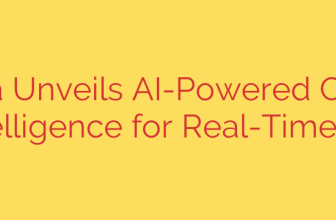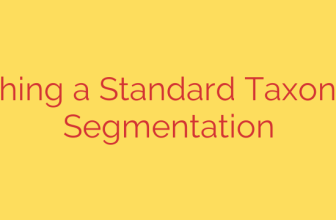
Automate Everything: A Deep Dive into OpenAI’s New ChatGPT Agent Builder
The conversation around artificial intelligence is about to shift from asking questions to assigning tasks. While chatbots have become masters of information retrieval and content creation, the next frontier is true automation. We are now seeing the emergence of powerful tools designed to create autonomous AI agents, and a new “Agent Builder” within the ChatGPT ecosystem is poised to lead the charge.
This development signals a significant evolution beyond custom GPTs, moving from specialized knowledge bots to proactive, task-oriented digital assistants that can operate across multiple applications.
What Are AI Agents, Really?
Before diving into the new builder, it’s crucial to understand what an AI agent is. Unlike a standard chatbot that waits for your prompt and provides a text-based response, an AI agent is designed for action. Think of it less as a conversationalist and more as a digital employee or personal assistant.
An AI agent can:
- Perform multi-step tasks autonomously.
- Integrate with other software and APIs.
- Analyze data, make decisions, and execute actions on your behalf.
Essentially, you provide an AI agent with a goal—like “Plan a business trip to Tokyo for next week, find the most cost-effective flights, and book a hotel near the convention center”—and it works independently to achieve it.
Introducing the ChatGPT Agent Builder
The new Agent Builder is a platform that allows users to create, customize, and deploy these AI agents without needing extensive coding knowledge. This tool aims to democratize the creation of sophisticated AI assistants, enabling businesses and individuals to build bespoke solutions for their unique needs.
The core concept is to provide a user-friendly interface where you can define an agent’s objectives, grant it access to specific tools (like your calendar, email, or a CRM), and set the parameters for its operation. This moves beyond simply feeding a bot a document for context; it’s about giving the AI the tools and permission to act on that context.
From GPTs to Autonomous Agents: The Key Difference
Many users are familiar with creating Custom GPTs, which are specialized versions of ChatGPT trained on specific data sets. While powerful, they are primarily informational. You can ask a Custom GPT questions about your company’s knowledge base, but you can’t ask it to file an expense report.
AI agents are the next logical step. The key distinction lies in autonomy and action.
- Custom GPTs are experts you consult for information.
- AI Agents are assistants you delegate tasks to.
This new builder provides the framework to connect the powerful reasoning engine of models like GPT-4 to the real-world applications you use every day, effectively bridging the gap between knowledge and execution. The goal is to automate complex digital workflows that currently require significant manual intervention.
Potential Use Cases and Applications
The ability to build custom AI agents unlocks a vast range of possibilities for both professional and personal productivity.
For Businesses:
- Automated Customer Support: An agent could handle initial customer queries, access order histories, process returns, and escalate complex issues to a human agent, all within your existing CRM.
- Sales and Lead Management: Imagine an agent that can browse the web for new leads based on specific criteria, populate your CRM with their contact information, and draft initial outreach emails.
- Data Analysis and Reporting: You could task an agent to monitor sales data daily, identify anomalies, and automatically generate a summary report sent directly to your inbox.
For Individuals:
- Personal Travel Assistant: An agent could manage your entire travel itinerary, from booking flights and hotels to making restaurant reservations and adding everything to your calendar.
- Proactive Calendar Management: An AI agent could analyze your emails, identify meeting requests, check your availability, and propose meeting times without you lifting a finger.
- Research Assistant: Delegate complex research tasks. For example, “Analyze the top five competitors in the e-bike market, summarize their product offerings, pricing, and customer reviews in a document.”
Security and Practical Advice for Implementation
Granting AI autonomy over your digital tools naturally raises important security questions. As this technology becomes more accessible, it’s vital to approach it with a clear strategy and a focus on security.
- Start with Low-Risk Tasks: When you begin experimenting with AI agents, assign them non-critical, observable tasks. For instance, have an agent organize files or summarize internal documents before giving it access to customer-facing systems.
- Implement Strict Permissions: Never grant an AI agent broad, unfettered access. Use the principle of least privilege: give it only the specific permissions and API access it needs to perform its designated task.
- Monitor and Audit Activity: Ensure you have logs of every action the agent takes. Regularly review these logs to ensure the agent is operating as intended and to catch any unexpected behavior early.
- Use Secure Authentication: When connecting agents to other services, always use secure methods like OAuth or dedicated API keys. Avoid hardcoding passwords or sensitive credentials directly into the agent’s instructions.
The development of a no-code AI Agent Builder is more than just an upgrade—it’s a paradigm shift. We are moving toward a future where we can all have a team of personalized digital specialists working for us, automating the mundane and freeing up human potential for more strategic, creative endeavors.
Source: https://www.bleepingcomputer.com/news/artificial-intelligence/openai-is-testing-chatgpt-powered-agent-builder/








